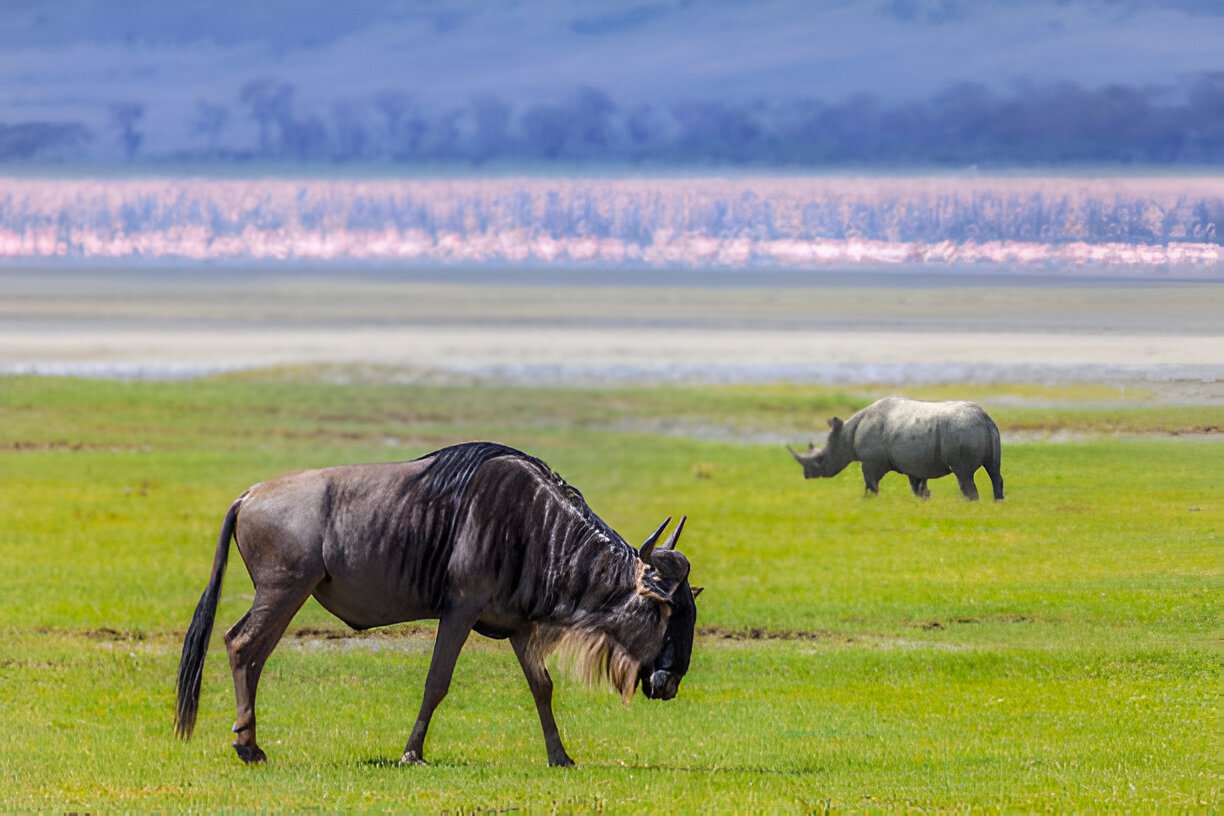Tanzania is a land of breathtaking landscapes, rich wildlife, and vibrant cultures, making it one of the most sought-after safari destinations in the world. Whether you dream of witnessing the Great Migration, exploring dramatic national parks, or immersing yourself in the rich traditions of its local tribes, Tanzania offers an unforgettable experience for every nature enthusiast. In this travel guide, we’ll take you through what to expect on your safari trip across this remarkable country’s wild nature.
1. The Wild Landscape of Tanzania
Tanzania is home to some of the world’s most iconic landscapes, each uniquely shaped by its diverse ecosystems:
- The Serengeti Plains: Famous for the Great Migration, the Serengeti boasts rolling grasslands, acacia woodlands, and riverine forests—making it a wildlife photographer’s paradise.
- Ngorongoro Crater: The world’s largest inactive volcanic caldera, Ngorongoro offers a diverse habitat for wildlife, including zebras, elephants, and the critically endangered black rhinoceros.
- Mount Kilimanjaro: Towering at 5,895 meters, Kilimanjaro is not just a climber’s challenge but also a breathtaking backdrop for safaris, offering stunning views from its lower slopes.
- Lake Manyara: Renowned for its flamingos, tree-climbing lions, and diverse birdlife, Lake Manyara National Park showcases a unique blend of ecosystems—from lush forests to expansive wetlands.
2. Experiencing the Great Migration
One of the most spectacular wildlife events on Earth, the Great Migration occurs between June and October as millions of wildebeest, zebras, and gazelles traverse the plains in search of fresh pastures. Witnessing this natural phenomenon is a highlight of any trip to Tanzania. Additionally, the predators—lions, cheetahs, and hyenas—follow closely behind, making for heart-pounding wildlife viewing.
3. Wildlife Encounters in National Parks
Tanzania’s national parks are teeming with wildlife, and every safari offers the chance to spot a range of animals in their natural habitats. Here are some draws of various parks:
- Serengeti National Park: Seek out the “Big Five” (lion, leopard, elephant, buffalo, and rhinoceros) during game drives, and be sure to look up for the diverse bird species that call this park home.
- Tarangire National Park: Known for its enormous elephant herds and iconic baobab trees, Tarangire thrives during the dry season, drawing a multitude of wildlife to its river.
- Ruaha National Park: As one of the lesser-known gems, Ruaha offers a pristine wilderness experience with fewer tourists. Guests can expect encounters with lions, leopards, and cheetah amid beautiful landscapes.
- Selous Game Reserve: This vast and remote area is perfect for those seeking adventure. Here, you can enjoy walking safaris and boat safaris along the Rufiji River, creating a more intimate wildlife experience.
4. Cultural Immersion
Tanzania boasts a vibrant tapestry of cultures, deeply intertwined with nature. Engage with local communities by visiting Maasai villages, where you can learn about their traditional ways of life, unique customs, and artistic crafts. You might even participate in a traditional dance or hear stories of their historical connection to the land. This connection to culture enhances your safari experience by providing a deeper understanding of the people who live alongside Tanzania’s breathtaking wildlife.
5. Safari Activities Beyond Game Drives
While game drives remain the primary focus of most safaris, there are numerous ways to immerse yourself further into Tanzania’s wild nature:
- Walking Safaris: Experience the wilderness on foot under the guidance of experienced rangers. Walking safaris offer opportunities to learn about the ecosystem, animal tracks, and plant life up close.
- Hot Air Balloon Safaris: Float above the Serengeti at sunrise to witness the landscape awakening and the wildlife below. Many operators offer champagne breakfasts upon landing, making this a truly unforgettable experience.
- Canoeing Safaris: Explore the waterways of Selous or other lakes while paddling in a canoe. This perspective often allows for closer encounters with birds and hippos, and you may even spot crocodiles basking in the sun.
6. Important Tips for Your Safari
- Pack Wisely: Bring lightweight, breathable clothing in neutral colors to blend in with the environment. Don’t forget essentials like sunscreen, a hat, binoculars, and a good camera!
- Respect Wildlife: Keep a safe distance from animals at all times. Always listen to your guide’s instructions to minimize disturbance to their natural behavior.
- Stay Hydrated: Tanzania can be hot, especially on safari, so drink plenty of water throughout your trip.
Conclusion
A safari trip in Tanzania promises a breathtaking journey through some of Africa’s most stunning landscapes, abundant wildlife

